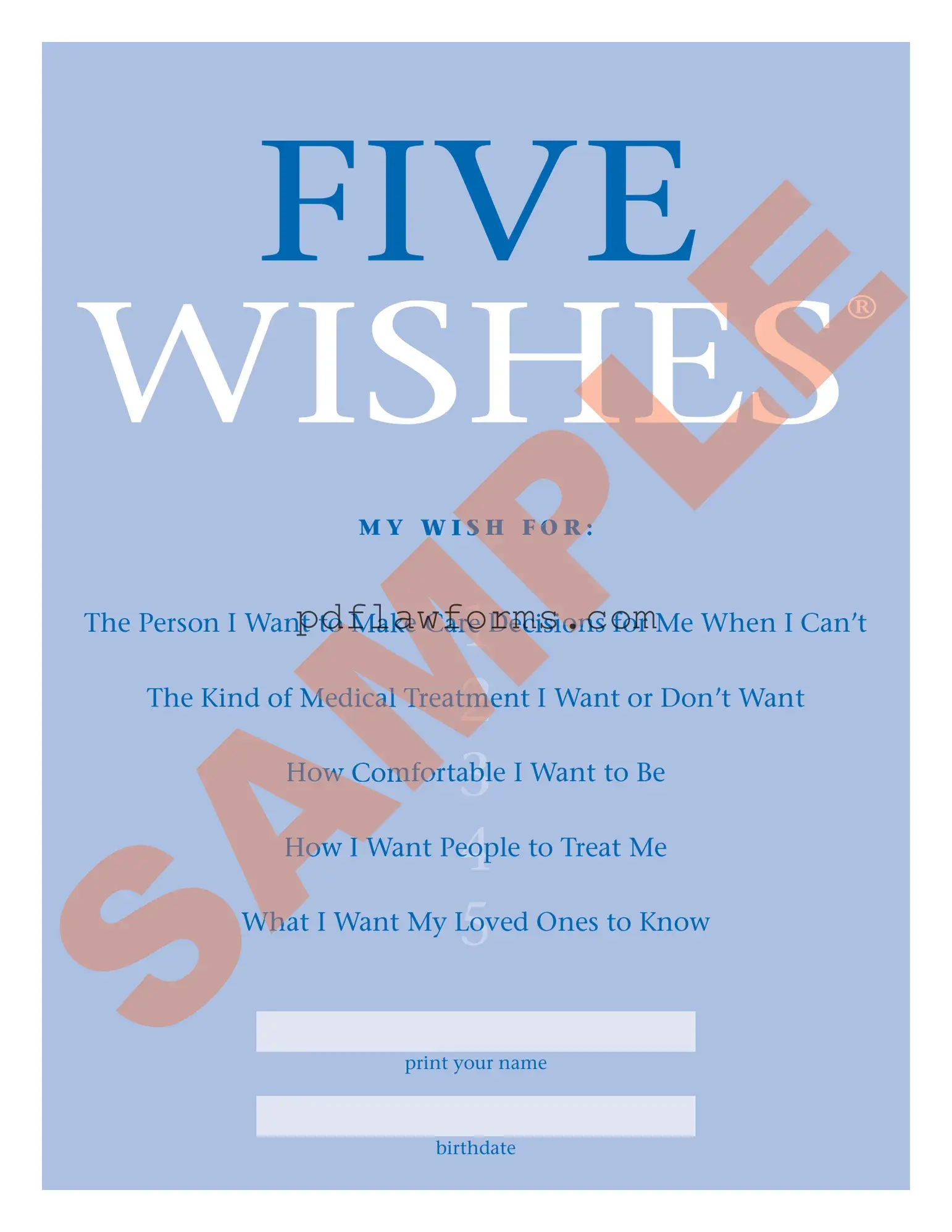Filling out the Five Wishes document is a crucial step in ensuring that your healthcare preferences are respected. However, many individuals make common mistakes that can lead to confusion or invalidation of their wishes. Understanding these pitfalls can help you avoid them and ensure that your document serves its intended purpose.
One significant mistake is failing to choose a health care agent. Some people may leave this section blank, thinking it is not necessary. However, selecting a trusted individual to make decisions on your behalf is vital. Without a designated agent, your family may struggle to know what you would have wanted, leading to potential conflicts or decisions that do not align with your values.
Another frequent error involves incomplete or unclear instructions. When filling out the form, it is essential to be as specific as possible about your wishes. Vague statements can lead to misinterpretation by your health care agent or medical professionals. For instance, instead of stating you want “comfortable care,” specify what that means to you. Clarity is key to ensuring your desires are honored.
Many individuals also overlook the importance of updating the document as life circumstances change. If your health care agent moves away, or if your relationship with them changes, it’s crucial to revise the document accordingly. Failing to do so can result in the wrong person making decisions for you at a critical time.
Additionally, some people neglect to discuss their wishes with their chosen agent. Simply naming someone as your health care agent does not guarantee they will understand your preferences. Engaging in an open conversation about your values and desires ensures that they are prepared to advocate for you when necessary.
Another common oversight is not signing and dating the document properly. The Five Wishes form must be signed in accordance with your state’s requirements to be valid. This often includes having witnesses or notarization. Double-checking these details can prevent your wishes from being disregarded due to technicalities.
Finally, individuals may forget to inform relevant parties about their completed Five Wishes document. It is essential to share this information with your health care agent, family members, and medical providers. If they are unaware of your wishes, the purpose of the document can be undermined. Make sure that those who may need to act on your behalf are fully informed and have access to the document.
By being aware of these common mistakes, you can take proactive steps to ensure that your Five Wishes document accurately reflects your preferences and is respected when it matters most.
